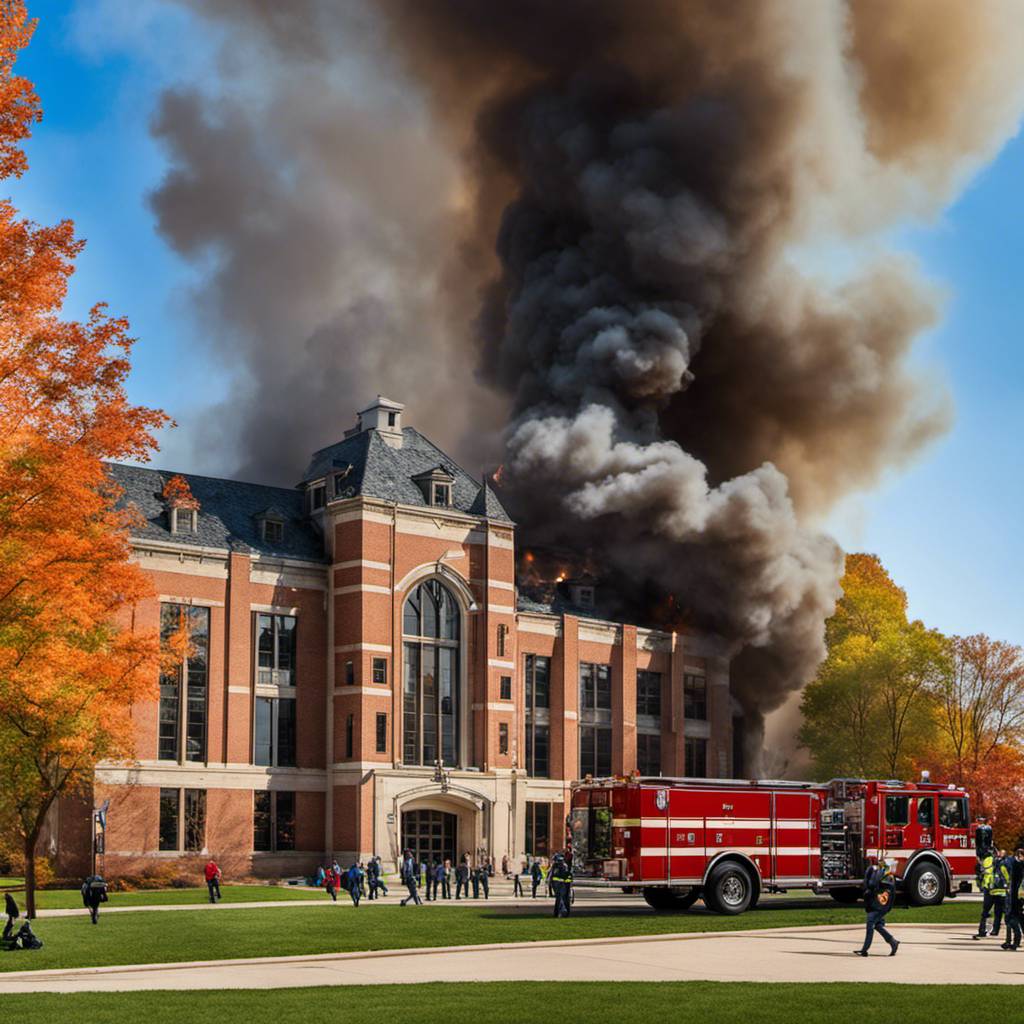In a shocking incident, a fire broke out in the robotics and engineering wing of the Center for Applied Science and Engineering Technology Building at Lake Superior State University, Michigan. The fire, which caused extensive damage to the robotics room, was reported just before 2:30 p.m., leading to the immediate evacuation of the building. Thankfully, no injuries were reported, and the evacuation process was carried out smoothly and efficiently.
Fire Chief Ed Miller confirmed that the damage to the robotics room was severe. “There is smoke damage throughout the entire building, so classes will be relocated tomorrow,” he said. The Michigan state police, along with the fire marshal, will be conducting a thorough investigation to determine the cause of the fire. The Sault Ste. Marie Fire Department cleared the scene by 5:30 p.m., after ensuring that the building was safe.
The fire department was alerted about smoke in the robotics/engineering wing of the building. Responding promptly, they employed Tower 58 to inspect the roof for any signs of fire. Due to east winds blowing fumes and smoke through the Cisler parking lot, the evacuated individuals were instructed to stay on the south side of the Cisler Center.
The building, which houses several classes related to electronics, computers, programming languages, and coding, is a crucial part of the university’s academic infrastructure. The incident has led to a temporary suspension of classes in the Center for Applied Science and Engineering Technology Building.
The incident has sparked concern among students and faculty alike, given the importance of the facility in providing hands-on experience in electronics and computer engineering. The center is well-known for its state-of-the-art labs that provide students with practical experience in various programming languages and coding techniques.
The fire’s impact on the university’s academic schedule is yet to be fully assessed. However, the university administration is working diligently to minimize disruptions. Temporary arrangements are being made to ensure that the affected students can continue their coursework without significant delay.
The incident serves as a stark reminder of the importance of fire safety in academic institutions, particularly in buildings housing sensitive equipment related to electronics and computer engineering. It underscores the need for robust fire safety measures and regular inspections to prevent such incidents in the future.
While the incident is undoubtedly a setback for the university, it is also an opportunity to review and strengthen safety protocols. The university’s swift response to ensure the safety of its students and staff is commendable and demonstrates its commitment to providing a safe learning environment.
As the university community rallies together in the aftermath of the fire, it is hoped that the incident will lead to increased awareness about fire safety and the importance of regular inspections. The university is expected to bounce back from this incident, with lessons learned and safety measures reinforced.
More information about the incident and its impact on the university’s academic schedule will be provided as it becomes available. In the meantime, students and faculty are asked to remain patient and supportive as the university works towards restoring normalcy.
In conclusion, while the fire at Lake Superior State University’s Center for Applied Science and Engineering Technology Building has caused significant damage, it has also highlighted the importance of fire safety measures in academic institutions. As investigations continue, we hope for a swift recovery and resumption of regular classes, keeping the spirit of learning alive.
